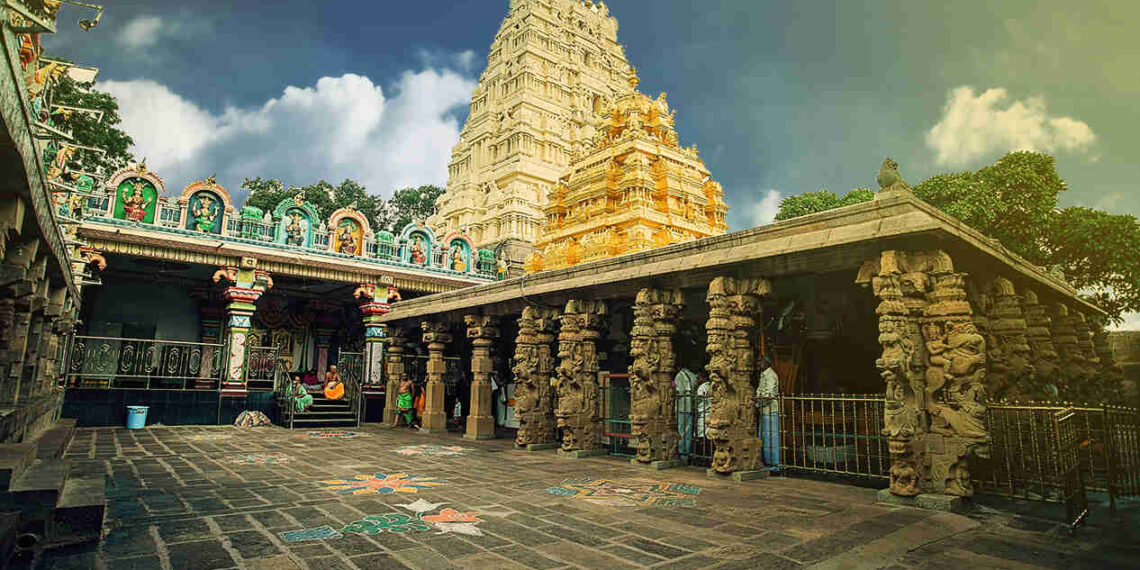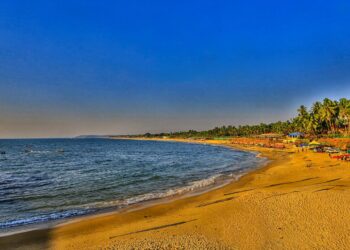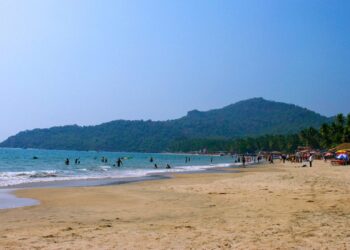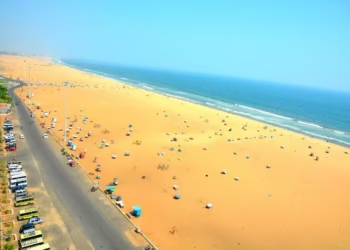Andhra Pradesh is a land of ancient tales in South India and holds many ancient Hindu temples among which the Srisailam Mallikarjuna Swamy Temple in Srisailam is a holy abode for Lord Shiva as Mallikarjuna and Goddess Brahmaramba. Nestled in the Nallamala Hills by the Krishna River, this 6th-century shrine sits 500 meters high, with views of green forests. One of the ten greatest Jyotirlinga in Indian subcontinent, the temple is renown for its Maha Shivaratri celebration.
Legend of the Temple
The Srisailam Mallikarjuna Swamy Temple is filled with many sacred stories. One main legend comes from the Shiva Purana itself. Long ago, Lord Shiva and Parvati’s son Kartikeya left home after a quarrel. Shiva and Parvati came to this hill to find him, and Shiva stayed as Mallikarjuna, a Jyotirlinga, while Parvati became Brahmaramba. The temple honors their divine bond, and people say worshipping here brings peace and strength. Another story tells of a tribal woman in the 7th century who saw Shiva in a dream, asking her to build a shrine. She did, and Srisailam grew holy, making Mallikarjuna the hill’s guardian.
History of the Srisailam Mallikarjuna Swamy Temple
The temple has a history that goes far back, to the 6th century with the Chalukyas, though some say the worship started earlier. A stone writing from 550 CE nearby hints people prayed here early, but the temple we see began with Chalukya kings. Old records say priests kept its rituals strong. By the 14th century, Vijayanagara king Harihara Raya added halls, as temple stones show. The Reddy kings, from the 1300s to 1400s, gave gold and lamps, making it a big spiritual place, old books tell.
By the 1500s, the temple was a lively spot, with farmers, traders, and devotees keeping it strong, Srisailam’s logs say. The Vijayanagara rulers, from the 14th to 16th centuries, built walls around the hill, tying the temple to their lands. In 1520, Krishnadevaraya chose Mallikarjuna as a royal deity, linking it to grand festivals. The Qutb Shahis held Srisailam briefly in the 1600s, then the British came by 1858, but the prayers never stopped. After 1947, Andhra’s government took over, with the Endowments Board running it now. Telugu songs by saints like Annamacharya, who sang for Shiva, spread its fame, helping Andhra’s Bhakti ways grow. As a Jyotirlinga and Shakti Peetha, it calls thousands seeking divine grace, making it a key part of Srisailam’s heritage.
Architecture of the Temple
The Srisailam Mallikarjuna Swamy Temple mixes Dravidian and Chalukya styles, covering 5 acres. Its seven-story gopuram, 35 meters tall, is covered with carvings of Shiva’s tales, dancers, and lion-like yalis, painted white and gold. A stone door, carved with gods, leads to the sanctum, where the 6th-century Mallikarjuna lingam glows with oil lamps. A small shrine for Brahmaramba, built in 1000 CE, is close by. The main holy room, fixed in 1400, has stone pillars with Mahabharata scenes and Vijayanagara signs.
The navaranga hall, with 20 pillars, shows Ramayana tales and Chalukya marks. A 10-foot Nandi statue, carved in 1450, sits outside, facing the lingam. The courtyard has a holy tank, Patala Ganga, for washing before prayers. Shrines for Ganesha, Kartikeya, and Surya are around. Wall carvings from the 1300s, kept by the ASI, show Shiva’s dance, making every spot a piece of the past. The temple’s hilltop spot, looking over Srisailam’s forests, ties it to the town’s past as a faith hub, near the Krishna River.
Festivals and Rituals
The temple blazes intensely during festivals, especially Maha Shivaratri occurring in February or March, a grand celebration from ancient times. On this night, the lingam is bathed in milk, with priests offering bilva leaves and chanting Sanskrit mantras, drawing many. Navratri honors Brahmaramba with lamps and songs. Six daily rituals, from 5 AM to 8 PM (free to enter, ₹100 for fast darshan), have priests giving rice, flowers, and jaggery, with the Shiva mantra ringing in the environment. Telugu bhajans and Kuchipudi dances, telling Shiva’s stories, fill the air. Shivaratri’s abhishekam, a special puja, mixes faith and joy, as locals share tales of Mallikarjuna’s care.
Getting to the Temple
Srisailam is a bit far but reachable. Hyderabad Airport, 215 km away, has flights from Delhi (2 hours) or Chennai (1 hour). Taxis take 4 hours to the temple. Kurnool Railway Station, 180 km away, links to Hyderabad (4 hours), Bangalore (8 hours), and Chennai (10 hours). Buses or taxis from Kurnool take 3 hours. Buses from Hyderabad (213 km, 5 hours) or Vijayawada (350 km, 7 hours) stop at Srisailam Bus Stand, 1 km away. Local autos cost 20-50 rupees to the temple. No entry fee, but pujas may cost 100-500 rupees.
Practical Tips for Visiting
Andhra Pradesh gets hot, up to 85-100°F, with rains from June to September. November to February is cooler, around 70-85°F. Go at 5 AM to skip crowds and heat. Wear clothes covering shoulders and knees; dhotis or kurtas are best. Take off shoes and wash feet at the tank if told. No photos in the sanctum—ask priests. Stay quiet during prayers and don’t touch idols or carvings. Shivaratri gets full, so book pujas early. Bring water and a hat for the hill paths. Autos in Srisailam cost 20-50 rupees.
Final Thoughts
The Srisailam Mallikarjuna Swamy Temple is a gem that reflects Andhra’s sacred past and stunning heritage. The Dravidian gopuram, carved stones, and Mallikarjuna lingam call devotees from far away, where Shiva’s holy presence lives in every stone and chant that fills the air, making it a must-visit among Andhra’s shrines.











